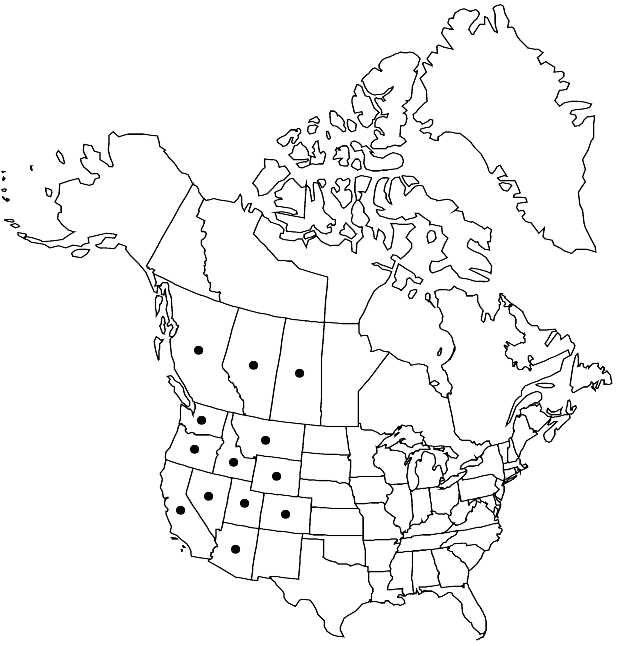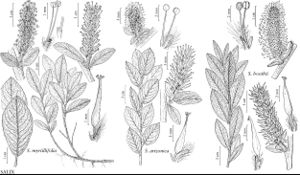Difference between revisions of "Salix boothii"
Canad. J. Bot. 53: 1505. 1975.
FNA>Volume Importer |
imported>Volume Importer |
||
| (3 intermediate revisions by 2 users not shown) | |||
| Line 8: | Line 8: | ||
}} | }} | ||
|common_names=Booth’s willow | |common_names=Booth’s willow | ||
| + | |special_status={{Treatment/ID/Special_status | ||
| + | |code=F | ||
| + | |label=Illustrated | ||
| + | }}{{Treatment/ID/Special_status | ||
| + | |code=E | ||
| + | |label=Endemic | ||
| + | }} | ||
|basionyms= | |basionyms= | ||
|synonyms={{Treatment/ID/Synonym | |synonyms={{Treatment/ID/Synonym | ||
|name=Salix novae-angliae var. aequalis | |name=Salix novae-angliae var. aequalis | ||
|authority=Andersson | |authority=Andersson | ||
| + | |rank=variety | ||
}} {{Treatment/ID/Synonym | }} {{Treatment/ID/Synonym | ||
|name=Salix pseudocordata var. aequalis | |name=Salix pseudocordata var. aequalis | ||
|authority=(Andersson) C. R. Ball ex C. K. Schneider | |authority=(Andersson) C. R. Ball ex C. K. Schneider | ||
| + | |rank=variety | ||
}} | }} | ||
|hierarchy=Salicaceae;Salix;Salix subg. Vetrix;Salix sect. Hastatae;Salix boothii | |hierarchy=Salicaceae;Salix;Salix subg. Vetrix;Salix sect. Hastatae;Salix boothii | ||
| Line 41: | Line 50: | ||
-->{{#Taxon: | -->{{#Taxon: | ||
name=Salix boothii | name=Salix boothii | ||
| − | |||
|authority=Dorn | |authority=Dorn | ||
|rank=species | |rank=species | ||
| Line 55: | Line 63: | ||
|publication title=Canad. J. Bot. | |publication title=Canad. J. Bot. | ||
|publication year=1975 | |publication year=1975 | ||
| − | |special status= | + | |special status=Illustrated;Endemic |
| − | |source xml=https:// | + | |source xml=https://bitbucket.org/aafc-mbb/fna-data-curation/src/2e0870ddd59836b60bcf96646a41e87ea5a5943a/coarse_grained_fna_xml/V7/V7_115.xml |
|genus=Salix | |genus=Salix | ||
|subgenus=Salix subg. Vetrix | |subgenus=Salix subg. Vetrix | ||
Latest revision as of 22:30, 5 November 2020
Plants 0.3–6 m. Stems: branches yellow-gray, yellow-brown, or red-brown, not glaucous, glabrous, pilose, or villous; branchlets yellow-brown, gray-brown, or red-brown, (not or weakly glaucous), glabrous, pilose, or moderately densely villous. Leaves: stipules foliaceous, apex acute, acuminate, or rounded; petiole convex to flat, or shallowly grooved adaxially, 3–17 mm, pilose, villous, or pubescent adaxially; largest medial blade (often amphistomatous), lorate, narrowly oblong, or narrowly to broadly elliptic, 26–102 × 8–30 mm, 2.5–3–5.2 times as long as wide, base convex, rounded, or subcordate, margins flat or slightly revolute, (thickened), entire or serrulate, apex acute or acuminate, abaxial surface not glaucous, glabrous, pilose, or moderately densely short-silky, hairs (white, sometimes also ferruginous), wavy, adaxial dull or slightly glossy, glabrous or moderately densely pilose; proximal blade margins entire, crenate, or serrulate; juvenile blade green, pilose to densely villous abaxially, hairs white, sometimes also ferruginous. Catkins flowering as or just before leaves emerge; staminate stout or subglobose, 7–37 × 5–12 mm, flowering branchlet 0.5–5.6 mm; pistillate densely or moderately densely flowered, stout, 12–62 × 7–17 mm, flowering branchlet 1–9 mm; floral bract brown, 0.7–2.1 mm, apex rounded or retuse, abaxially hairy throughout or proximally, hairs straight, wavy, or curly. Staminate flowers: adaxial nectary narrowly oblong, oblong, ovate, or flask-shaped, 0.6–1.5 mm; filaments distinct or connate ca. 1/2 their lengths, glabrous, hairy on proximal 1/2; anthers yellow or purple turning yellow, 0.5–0.8 mm. Pistillate flowers: adaxial nectary oblong, ovate, or flask-shaped, 0.3–0.8 mm, shorter than stipe; stipe 0.5–2.5 mm; ovary pyriform, glabrous, beak gradually to abruptly tapering to or slightly bulged below styles; ovules 10–18 per ovary; styles 0.3–1.4 mm; stigmas flat, abaxially non-papillate with rounded tip, or slenderly cylindrical, or 2 plump lobes, 0.2–0.26–0.48 mm. Capsules 2.5–6 mm. 2n = 76.
Phenology: Flowering early Apr-early Jul.
Habitat: Wet subalpine meadows, seepages, streams, lakeshores
Elevation: 1500-3200 m
Distribution

Alta., B.C., Sask., Ariz., Calif., Colo., Idaho, Mont., Nev., Oreg., Utah, Wash., Wyo.
Discussion
Hybrids:
Salix boothii forms natural hybrids with S. brachycarpa var. brachycarpa, S. eastwoodiae, S. glauca var. villosa, and S. wolfii. There are numerous intermediate specimens of S. boothii that suggest hybridization with S. arizonica, S. brachycarpa, S. eastwoodiae, S. lutea, or S. wolfii, but further study is needed. A DNA study of S. arizonica showed that a specimen from southwestern Utah previously identified as S. arizonica × S. wolfii probably was S. boothii × S. wolfii (J. T. Thompson et al. 2003).
In Mountain Park, Alberta, and the Steens Mountains, Oregon, the putative hybrid Salix boothii × S. glauca var. villosa grew in thickets with both parents. Ovaries were sparsely hairy on the distal half or on the beak, leaves were glaucous abaxially, and floral bracts were mostly glabrous abaxially, but some with hairs proximally. One plant in fruit produced copious seed hairs but no seed.
Selected References
None.
